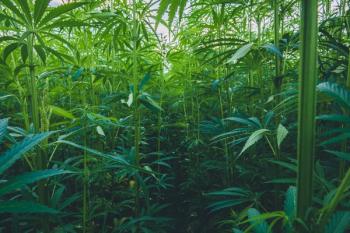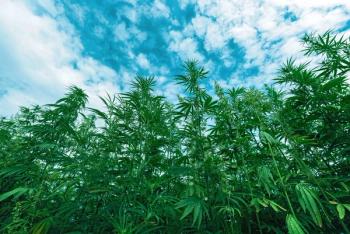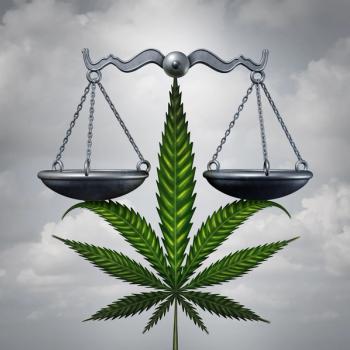
Cannabis Science and Technology
- March 2021
- Volume 4
- Issue 2
Around the World: Canada’s Footprint on the Cannabis Industry
Here we take a closer look at the cannabis industry in Canada and speak to several Canadians involved in the industry.
As cannabis legalization ramps up in the United States it’s important to look to other countries and check how they are handling the new age of cannabis legalization and learn from each other. Our neighbor to the north, Canada, has taken a strong approach with cannabis legalization. In this article, we take a closer look at the cannabis industry in Canada and speak to several Canadians involved in the industry.
Cannabis legalization is sweeping the nation. States throughout the US are beginning to see the benefits of both the medicinal properties and economic growth that the cannabis plant provides. As of the November 2020 election, 14 states have legalized recreational use and 35 states have legalized medical use. In early December 2020, the US House of Representatives passed the Marijuana Opportunity, Reinvestment, and Expungement (MORE) Act and the Medical Marijuana Research Act (1). Currently, those bills are sitting in the Senate, waiting for their turn in the legislation process. With the rise in legalization, the US should look to other countries around the world for guidance.
In this installment of "Around the World," we focus in on Canada which has become known as the most cannabis-friendly country in the world as chosen by The Weed Blog (2). Looking at the Great White North, we will explore the intimacy of Canada’s cannabis legislation.
Canadian Legalization of Cannabis
Cannabis in Canada first began in the form of hemp. In 1801, the Lieutenant Governor of Upper Canada began distributing hemp seeds to farmers, in an effort to help stimulate the economy (3). From there the industry grew until it was constituted as illegal in 1923, after the Narcotics Drug Act Amendment Bill brought in the Act to Prohibit the Improper Use of Opium and Other Drugs, which added cannabis, opium, cocaine, and morphine to the list. It wasn’t until 2000–2001 when cannabis was allowed for medicinal use in the Marihuana for Medical Access Regulations (MMAR), the country’s first rendering of a medical cannabis law. Through various battles regarding the constitutionality of their laws, the Government of Canada proposed the Cannabis Act in 2017 to legalize adult-use cannabis, which went into full effect in 2018, placing Canada as the second country in the world (following Uruguay), to legalize the possession, consumption of cannabis, acquisition, and cultivation of cannabis and its by-products (4).
Delving into Canada’s Cannabis Laws
With the Cannabis Act passed, a regulatory and legal framework was created to control the production, distribution, sale, and possession of cannabis (5). The new law shared responsibility to be implemented through the federal, provincial, and territorial governments. This meant that depending on the province or territory, each area would have their own set of restrictions. In Canada, there are 10 provinces: Alberta, British Columbia, Manitoba, New Brunswick, Newfoundland and Labrador, Nova Scotia, Ontario, Prince Edward Island, Quebec, and Saskatchewan. Aside from having 10 provinces to govern, Canada also consists of three territories named the Northwest Territories, Nunavut, and Yukon. Through the Cannabis Act, provinces and territories constructed precedents of how cannabis could be sold, locations of stores, how those stores needed to operate, who was allowed to sell the plant, and were granted the flexibility to add further restrictions such as, increasing the minimum age, lowering possession limits, restricting where cannabis could be used in public, and setting added requirements on personal cultivation (6). To determine if a cannabis product is legal and who has paid the excise tax to the Canada Revenue Agency (CRA), each territory and province has their own excise stamp plastered onto cannabis product packages prior to being sold in Canada (7). Medically prescribed cannabis, products intended for export, and low tetrahydrocannabinol (THC) products are exempt from receiving an excise stamp. Similar to Canada, the US has left it up to their own 50 states to decide on the regulations of both recreational and medical cannabis.
Let's take a closer look at the various rules in each province and territory in Canada.
Provinces
Alberta
- Legal consumption age: 18 years old
- Where to purchase: Privately licensed in-person or government-operated online store
- Public possession limit: 30 grams (g) of dried cannabis or an equivalent
British Columbia
- Legal consumption age: 19 years old
- Where to purchase: Government-operated in-person and online stores or private licensed in-person stores
- Public possession limit: 30 g of dried cannabis or an equivalent
Manitoba
- Legal consumption age: 19 years old
- Where to purchase: Private licensed in-person and online stores
- Public possession limit: 30 g of dried cannabis or an equivalent
New Brunswick
- Legal consumption age: 19 years old
- Where to purchase: Government-operated in-person and online stores
- Public possession limit: 30 g of dried cannabis or an equivalent
Newfoundland and Labrador
- Legal consumption age: 19 years old
- Where to purchase: Private licensed in-person stores or government-operated online store
- Public possession limit: 30 g of dried cannabis or an equivalent
Nova Scotia
- Legal consumption age: 19 years old
- Where to purchase: Government-operated in-person and online stores
- Public possession limit: 30 g or dried cannabis or an equivalent
Ontario
- Legal consumption age: 19 years old
- Where to purchase: Private licensed in-person stores or government-operated online store
- Public possession limit: 30 g of dried cannabis or an equivalent
Prince Edward Island
- Legal consumption age: 19 years old
- Where to purchase: Government-operated in-person and online stores
- Public possession limit: 30 g of dried cannabis or an equivalent
Quebec
- Legal consumption age: 21 years old
- Where to purchase: Government-operated in-person and online stores
- Public possession limit: 30 g of dried cannabis or an equivalent
Saskatchewan
- Legal consumption age: 19 years old
- Where to purchase: Private licensed in-person and online stores
- Public possession limit: 30 g of dried cannabis or an equivalent
Territories
Northwest Territories
- Legal consumption age: 19 years old
- Where to purchase: Government-operated in-person and online stores
- Public possession limit: 30 g or dried cannabis or an equivalent
Nunavut
- Legal consumption age: 19 years old
- Where to purchase: Government-operated online store or by phone
- Public possession limit: 30 g or dried cannabis or an equivalent
Yukon
- Legal consumption age: 19 years old
- Where to purchase: Private licensed in-person stores or government-operated online store
- Public possession limit: 30 g of dried cannabis or an equivalent
Medical Cannabis: A Constitutional Right
Although both medical and recreational cannabis are legal, this was not always the case, as we’ve seen. Prior to the Cannabis Act, the MMAR’s first rendition enacted in 2001, granted only medical cannabis in its dried form and could only be accessed through Health Canada (which is responsible for national health and various other health-related agencies), self-production, or a designated producer (8). With the MMAR signed into law, Canada became the first country in the world to legalize medical cannabis. By 2014, MMAR was replaced by the Marijuana for Medical Purpose Regulations (MMPR), which assisted in speeding up the process for obtaining medical cannabis paperwork and allowed for the decision to use medical cannabis as a treatment for health conditions to be between a patient and their healthcare practitioner. The federal government also established a Licensed Producer (LP) regulated program, which required Canadians to access medical cannabis through mail from an LP. Under the MMPR, personal-use production licenses were suspended, and all medical cannabis patients were required to register with an LP.
In 2016, new updates were going to be made to the regulations in Canada. Nanaimo, British Columbia resident, Neil Allard, began to question the constitutionality of the MMPR (9). On March 21, 2014, he challenged the provisions of the MMPR through the Supreme Court filing of Allard v. Her Majesty the Queen in Right of Canada (10). With this motion, Allard disputed that the MMPR was an attack on his personal health and infringing on Canadians’ right to reasonable access to cannabis for medical purposes. Through MMPR, he would have been unable to afford cannabis through the new LP system. The Federal Court of Canada ended up ruling in Allard’s favor stating that the MMPR was unconstitutional. Not long after, in 2016, the government rectified another new revision to Canada’s medical cannabis laws called, Access to Cannabis for Medical Purposed Regulations (ACMPR). The biggest reform introduced was the provision allowing Canadians who required medical cannabis were now allowed to cultivate a limited amount themselves or designate a third party grower to propagate for them.
Nick Trueman, Founder and Principal Consultant of ErieRest Cannabis Solutions, a global cannabis consultancy firm that provides a variety of consulting solutions to applicants and existing license holders as well as specializing in operations consulting related to cultivation, processing, and compliance (11), said that cannabis is fairly more accessible now than it was before.
“A medical document (basically a prescription) from Health Canada is required to purchase medical cannabis from a licensed producer. Many family doctors were initially very hesitant to prescribe medical cannabis so medical cannabis clinics sprung up all over Canada,” said Trueman. “These are clinics that have doctors and nurse practitioners that specialize in prescribing medical cannabis and they have become the main method for Canadians to obtain a medical cannabis prescription. There is no official list from Health Canada in terms of qualifying conditions, so doctors have basically been left on their own to determine if a patient is eligible for a cannabis prescription.”
Testing and Quality Control on the Canadian Cannabis Landscape
When the Cannabis Act went into effect in 2018, aside from the laying out the framework for managing the distribution, production, and sale of cannabis, the act established controls for the safe production of cannabis-derived products, such as extracts, topicals, and edibles. One of this momentous law’s objectives was to regulate quality control and the cannabis supply chain to create legal and safe cannabis products. Cannabis growers cultivating the plant for sale need to be authorized by Health Canada and may also need to obtain a license from the Canadian Revenue Agency (CRA) to sell cannabis with an excise stamp, which indicates that the product was produced legally (12). Due to Canada’s provinces and territories having the ability to regulate cannabis as their own entities, cannabis laws differ from one another. Overall, the Cannabis Act oversees the practices of LPs.
Before the bill, LPs cultivating medical cannabis were complying to requirements from the ACMPR, which required observing good production practices (GPP). Using GPP, it necessitates LPs to guarantee cleanliness of their equipment and facility. LPs are mandated to have a quality assurance program that enlists someone who is not linked to the production process to check for quality assurance (QA). These steps are crucial requirements of good manufacturing practices (GMP).
The impartial QA individual allows businesses to have checks and balances. Products being checked are put on hold until the safety and quality testing has been completed. Test results are then interpreted to see if the product is ready to be released for sale. By creating this role, the QA individual is separate from the establishment, so they are able to formulate decisions that may not always be in the best financial interest of the producer. The choices made during QA are meant to be for the best interests of the consumer and in compliance with regulations.
GPP regulations are constantly being replaced with updated governance, but they still require testing for cannabis and its other forms (fresh cannabis, dried cannabis, cannabis extracts, and so on):
- Chemical contaminants, such as pesticides, heavy metals, and solvent residues
- Microbial contaminants
- Potency testing for delta-9 THC, delta-9-tetrahydrocannabinolic acid (THCA), cannabidiol (CBD), and cannabidiolic acid (CBDA)
These are the same testing requirements that can be found in GMP, which ask for additional testing in:
- Environmental monitoring for microbial, biological, and chemical contaminants on the equipment and in the facility
- Testing of packaging and all other materials that the product comes into contact with
- Validations of operating procedures and test methods
- Bioburden testing and validation to establish safe limits of microbial inhabitance
Jeremy Melanson works as the Team Leader in Organic Chemical Metrology for the National Research Council Canada (NRC), which is the primary national research and technology organization (RTO) of the Government of Canada (13). The NRC serves as Canada’s metrology institute, analogous to the National Institute of Standards and Technology (NIST) in the US. Melanson mentioned that the NRC had already starting formulating cannabis testing methods and reference materials in 2017, in anticipation of the shift in legal framework surrounding cannabis in Canada.
To ensure quality of the product, Melanson said, “Canada has specific regulations for pesticides in cannabis currently consisting of a list of 96 banned pesticides with associated limits. As opposed to maximum residue limits, these limits refer to minimum performance limits for the method used, where laboratories need to demonstrate that their method can achieve limits of quantitation at or below these limits. For contaminants such as heavy metals or mycotoxins, Canadian regulations typically refer to US Pharmacopeia documents.”
Currently, Canadian regulations do not specify standardized testing methods, but state that validated testing methods must be used. Melanson further explained that as more standard test methods become available, it is presumed that testing laboratories will implement them instead of taking the time and effort to validate methods themselves. Many stakeholders in Canada, working in the government, cannabis industry, or testing laboratories are heavily involved in the development of standard testing methods through organizations such as the American Society for Testing and Materials (ASTM) International, Association of Official Agricultural Chemists (AOAC) International, and the United States Pharmacopeia (USP).
Although Canada’s cannabis regulations are meant to assist those in the industry, not all of their guidelines are a breeze to work with. Melanson discussed how the pesticide testing requirements in Canada are in his opinion, his greatest challenge “due to low limits of quantitation required combined with the prospect of new pesticides or revised limits over time.”
“In some cases, multiple mass spectrometry techniques are required to handle the wide range of volatilities and ionization efficiencies of the pesticides,” said Melanson. “In addition, when detecting pesticides at the low parts-per-billion level, interference from the large background of cannabinoids becomes one of the greatest challenges.”
Cannabis of the Future
The cannabis industry in Canada has experienced its own growing pains from childhood to adolescence. To reach maturity, the general consensus in the cannabis industry wish to see development in a more standardized approach to how products are tested, manufactured, and distributed. Through federal legalization, LPs received a head start and exceptional opportunity to create a leadership role in the global cannabis industry. The innovative supply chain management technology currently in use may also help lead to further international expansion (14).
Trueman believes that we will see consolidation as well as continued growth in the Canadian cannabis industry in the coming years. “The new wave of craft producers and processors coming online will place an even heavier demand on large licensed producers to produce high quality products that will compete with the craft market,” he said.
Known as “Cannabis 2.0” products (15), infused products such as infused beverages, topicals, edibles, vape cartridges, and other concentrates are expected to be on the rise and continue to expand in diversity and availability. Currently, stores have been experiencing shortages of cannabis-infused beverages and edibles. To keep up with the growing demand of interest in cannabis, outdoor cultivation is experiencing a boom, thus increasing regulated production. With outdoor cultivation gaining momentum, hopefully it will help growers lower production costs and create cheaper inputs for cannabis-derived products—an important key for attracting consumers who are focused on affordability.
While the future is always unknown, Canada will definitely take any opportunities that come its way to continue revolutionizing the cannabis industry, whether that is in cultivation, production, medicinal research, or testing methods.
Conclusion
After having cannabis federally legalized for the past three years, Canada has earned its footprint in history by tackling a new rising industry. So, what can the US learn from Canada? As more and more states legalize recreational and medical cannabis, we should use Canada as a case study and learn from what worked and also the challenges they faced navigating the industry so that we can learn from their premature rapid growth (16). Canada struggled in the beginning to provide a sufficient retail distribution framework to guarantee producers would have been able to get their products to consumers in a timely manner. Prioritizing distribution channels should be among some of the top considerations for the US market.
Another measure to consider is regulating taxes. Taxes need to be held at an affordable level. If tax revenue is too high, it will limit new consumers and illegal sellers will continue to stick around.
Perhaps the biggest takeaway from Canada is to simplify regulations. Canadian cannabis regulations were so rigorous that cannabis establishments found it difficult to operate as low-cost producers unless you had previously garnered some funding (17). The cannabis industry in the US is going to need to be accessible to a broader demographic and set up more simplified regulations that will prevent smaller, micro-companies from going bankrupt, benefiting the bigger monopoly corporations.
All eyes are focused on the US to see how we will navigate the cannabis market and continue to expand the growth of this promising industry.
References
https://www.cannabissciencetech.com/view/congress-passes-two-historic-cannabis-reform-bills .https://www.thegrowthop.com/cannabis-news/were-1-were-1-canada-top-of-the-tops-for-most-cannabis-friendly-country-to-visit .https://www.leafly.com/news/canada/history-cannabis-canada .https://en.wikipedia.org/wiki/Cannabis_in_Canada .https://www.canada.ca/en/health-canada/news/2018/06/backgrounder-the-cannabis-act-the-facts.html .https://www.canada.ca/en/health-canada/services/drugs-medication/cannabis/laws-regulations/provinces-territories.html .https://fuseinsurance.ca/what-you-should-know-about-cannabis-excise-stamps-as-a-licensed-producer/ .https://medicron.ca/pages/History+of+Medical+Marijuana/32 .https://www.leafly.com/news/canada/judge-declares-home-medical-grows-legal-in-canada .https://www.canlii.org/en/ca/fct/doc/2014/2014fc280/2014fc280.html#document .https://www.erierest.ca .https://groweriq.ca/2019/03/17/cannabis-act-gpp-and-gmp-for-cannabis-quality-assurance/ .https://en.wikipedia.org/wiki/National_Research_Council_Canada .https://www.benzinga.com/markets/cannabis/20/11/18327360/growing-pains-whats-next-for-the-cannabis-industry-in-canada .https://mjbizdaily.com/lay-of-the-land/ .https://www.greenentrepreneur.com/article/361744 .- R.J.P. Pusiak, C. Cox, and C.S.Harris, International Journal of Drug Policy (2021),
https://doi.org/10.1016/j.drugpo.2021.103111
About the Author
Madeline Colli is the Associate Editor for Cannabis Science and Technology and Cannabis Patient Care magazines.
Direct correspondence to:
How to Cite this Article
M. Colli, Cannabis Science and Technology 4(2), 41-47 (2021).
Articles in this issue
almost 5 years ago
Hemp Testing Insanity III: This Time It’s the USDA!almost 5 years ago
Quality Control Checkpoints in Cannabis Processingalmost 5 years ago
Why Does Leaf Temperature Matter in a Commercial Grow Room?almost 5 years ago
How to Distinguish Hemp from Marijuana with Mid-Infrared Spectroscopyabout 5 years ago
Quality Matters: A Chat with Keystone Labs President, Jodi McDonaldNewsletter
Unlock the latest breakthroughs in cannabis science—subscribe now to get expert insights, research, and industry updates delivered to your inbox.




